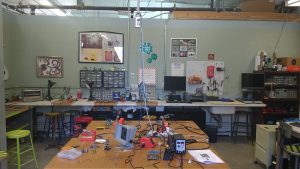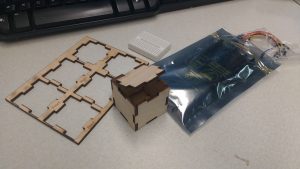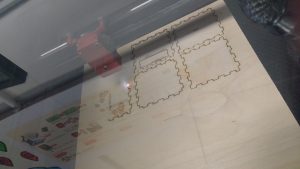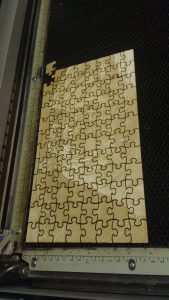This week’s session marked our final week at the Fab Lab. Our time spent here was memorable and it’s sad to say that this is our last class time here, but the skills and know-how gathered here were quite memorable and are sure to last us quite a while. To conclude our 3 week journey, everyone participated in their last workshop to finish our light boxes. For me, it was finally time to code.
Having finished all the hardware aspects of the project, the last remaining task was the most integral to the box’s function: its programming. The Arduino itself is a powerful tool, but it cannot be used to its full potential without working with coding. The capabilities of a programmed Arduino are only limited by its user. Being an electrical engineering major, I’m required to have expertise in programming. Most of the programming that I currently do is in C programming, which is what the Arduino IDE (Integrated Development Environment) is based off of. I don’t really deal with the actual custom Arduino software much, however, so it was good to get some practice with this.
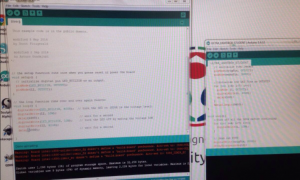 Arduino Software Application
Arduino Software Application
We began with the basics, making a simple LED blink. Then we gradually moved on through the Arduino language to where we would be able to design a program that would make the light box behave as we wanted it to: as a light sensor with LEDs that activate accordingly to the level of light. The Arduino IDE is custom built for the various modules that Arduino produces, and as such their certain commands and implications available only to it and not in conventional C programming. We began creating slightly more complex circuits on a test breadboard preparation for the final step of the project. We were allowed to play around and “hack” the programs provided to us so we could get a better feel of the software. This also allowed us to customize each of our light boxes to our preferences. We could select which LEDs would light up and in what order, the amount of light exposed to the sensor which would cause it to send signals to the LED, and so on. Relatively small adjustments, but those little differences were what allowed us to differentiate our final projects from each other. We finished compiling our code and assembled our boxes that we got to take home as a trophy for our weeks of work.
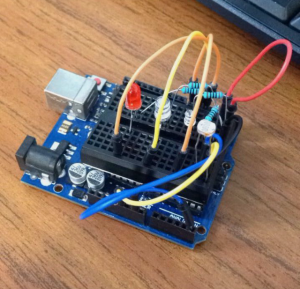 Test circuit for the final project
Test circuit for the final project
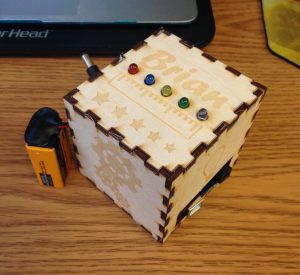 The long awaited finished product
The long awaited finished product
It may have taken place over a few weeks, but our time spent at the Fab Lab seemed relatively short. I cherish the skills I’ve gained here and the memories of the fun I’ve had these past few weeks will last my lifetime as a maker(i.e. the rest of my life). We’ve come quite a way from our first session here, and our final class projects as well as our abilities as makers have certainly benefited from it all. The Fab Lab was such an amazing experience: I loved being surrounded not only by all the amazing technological tools and processes, but by other inspired and talented people as well.





